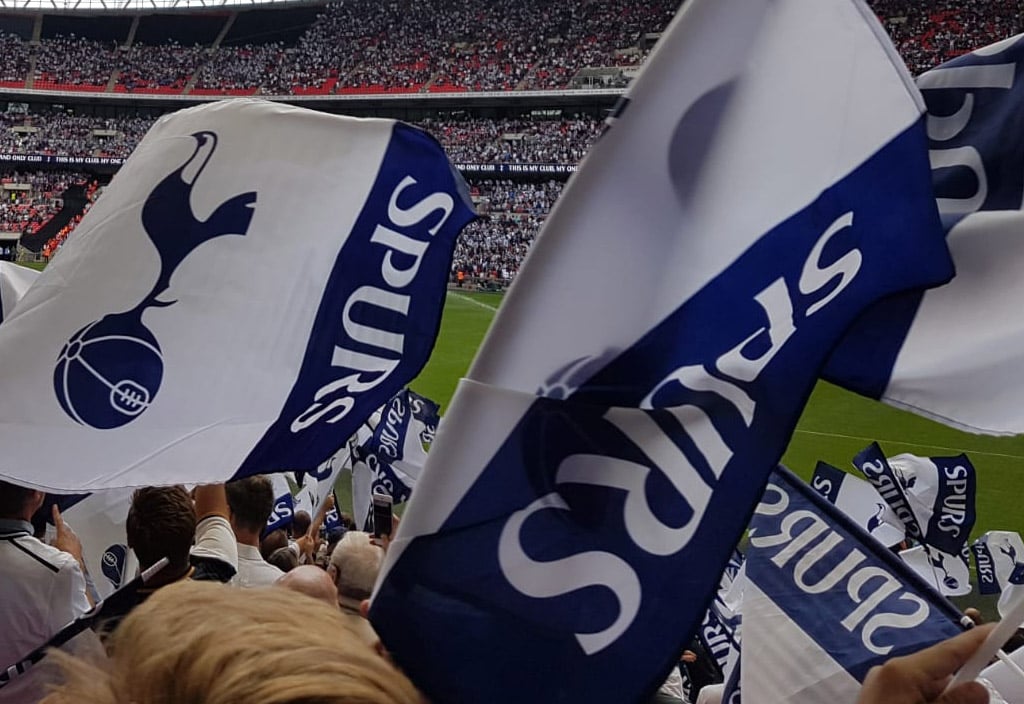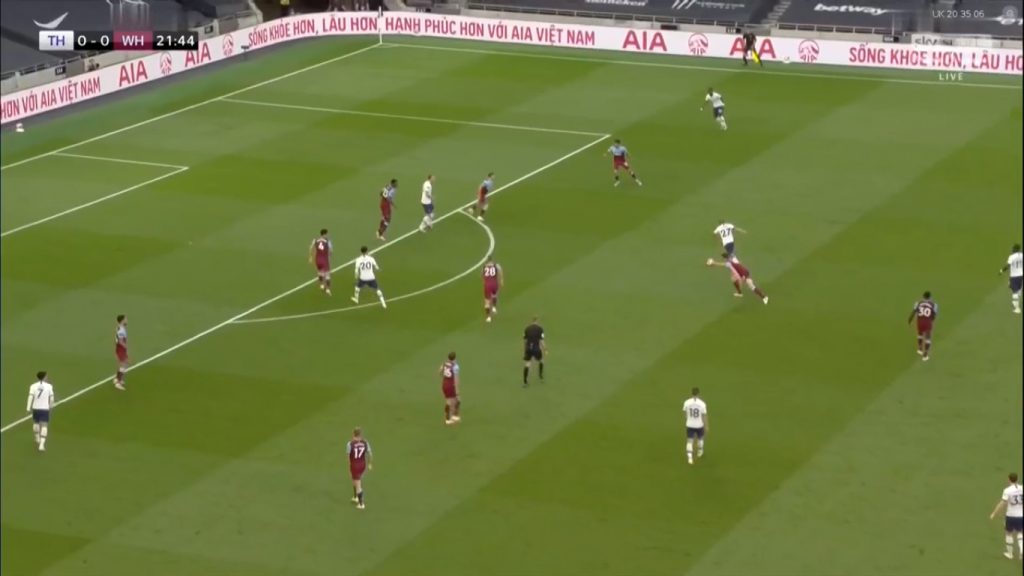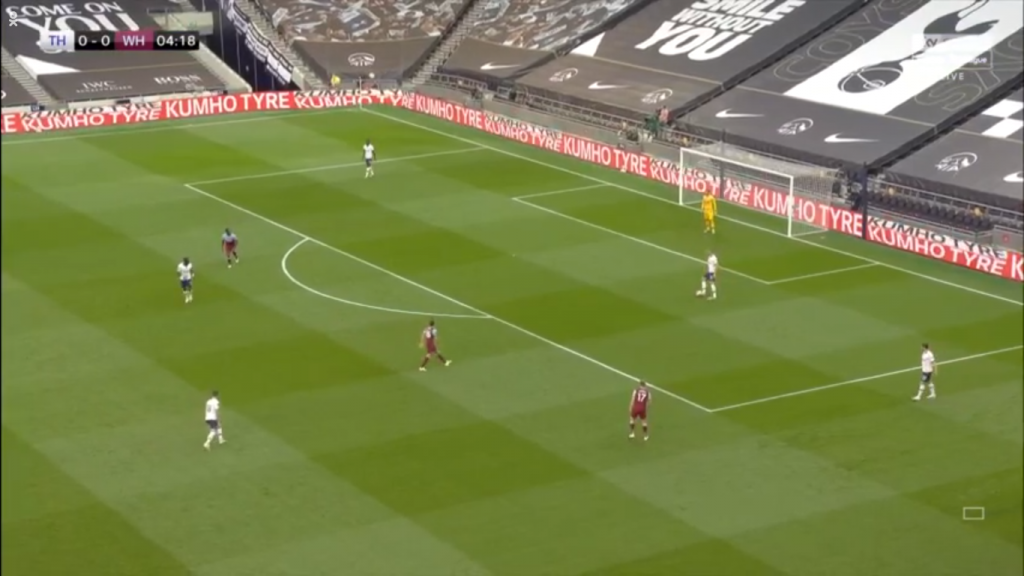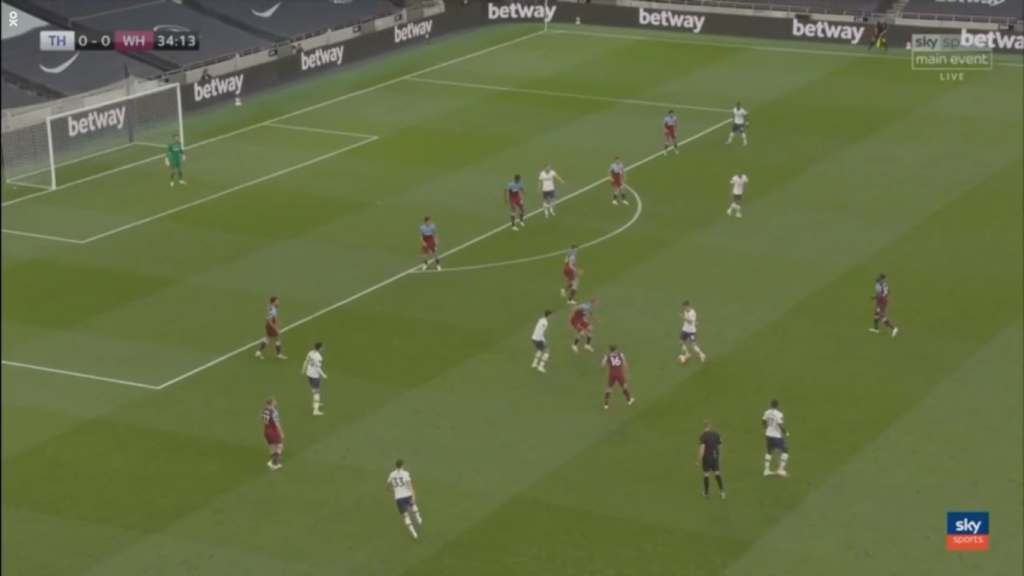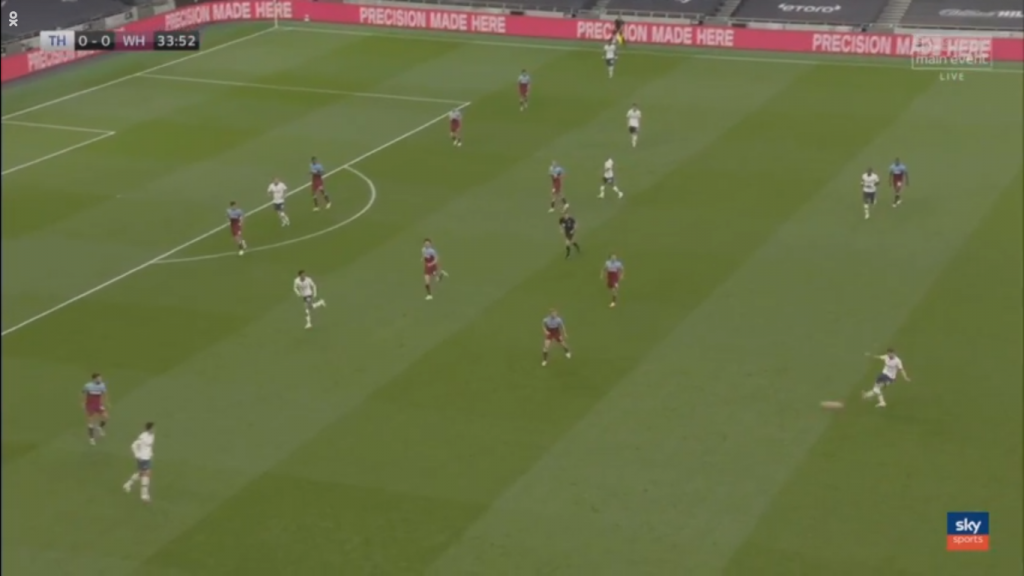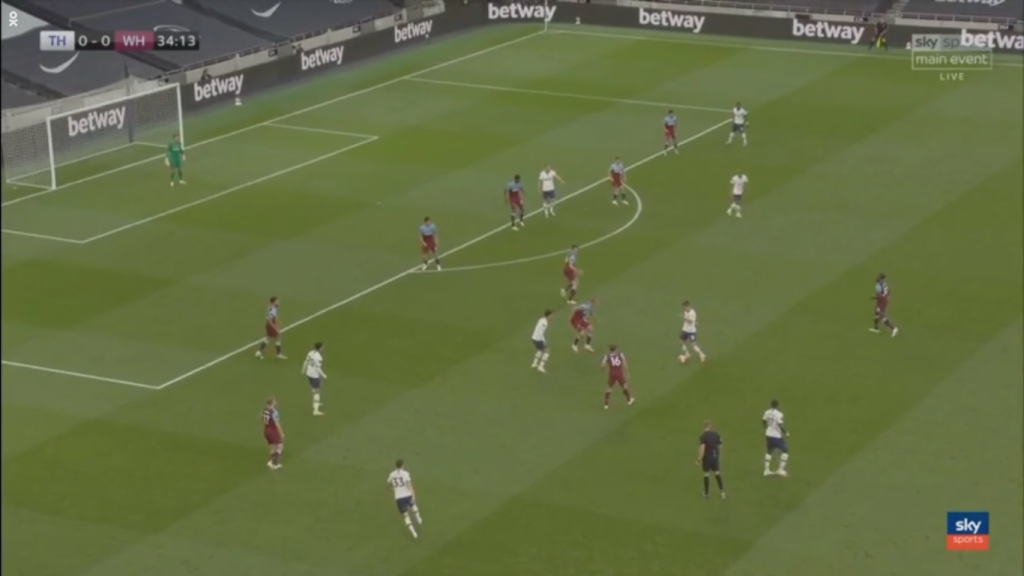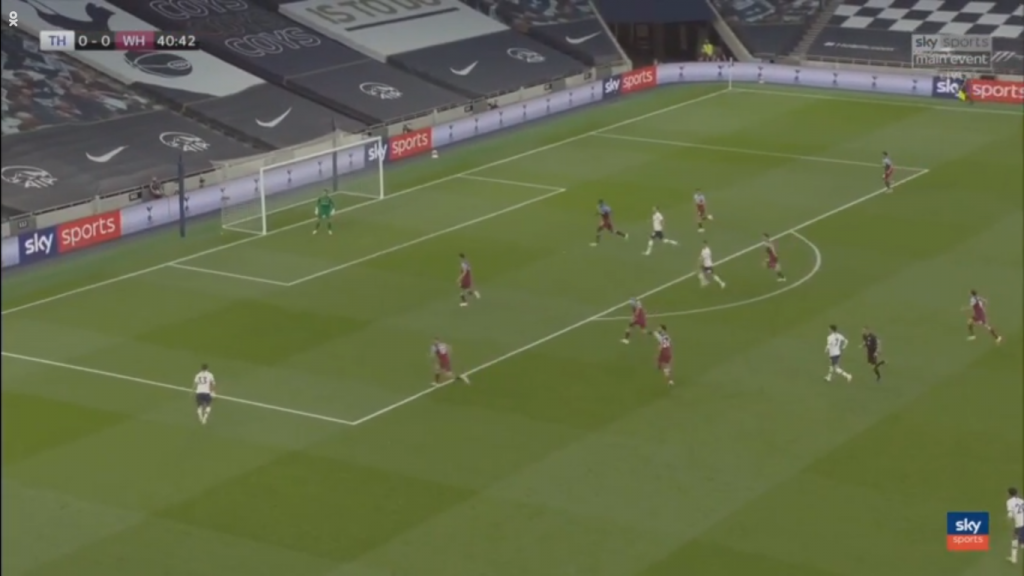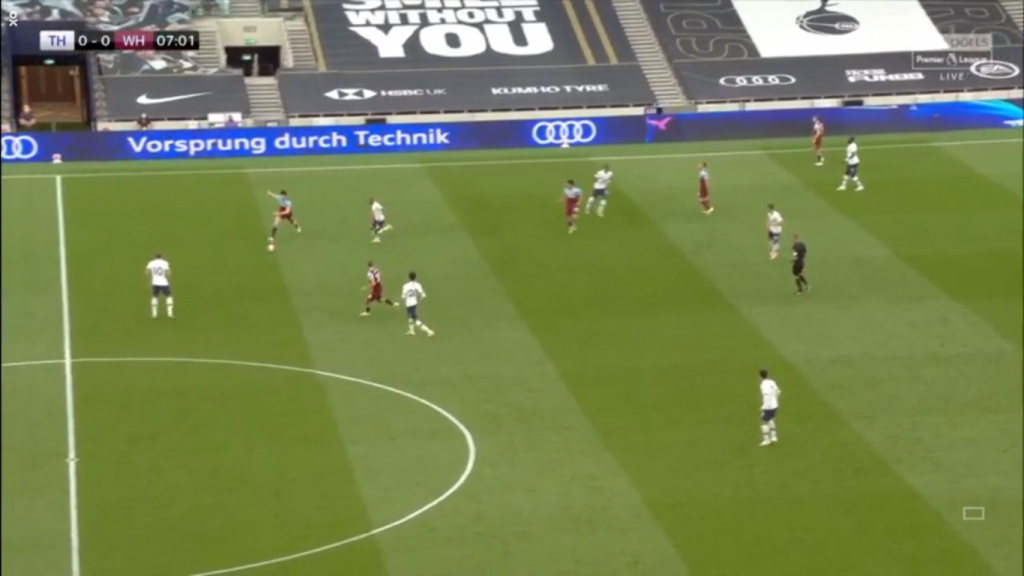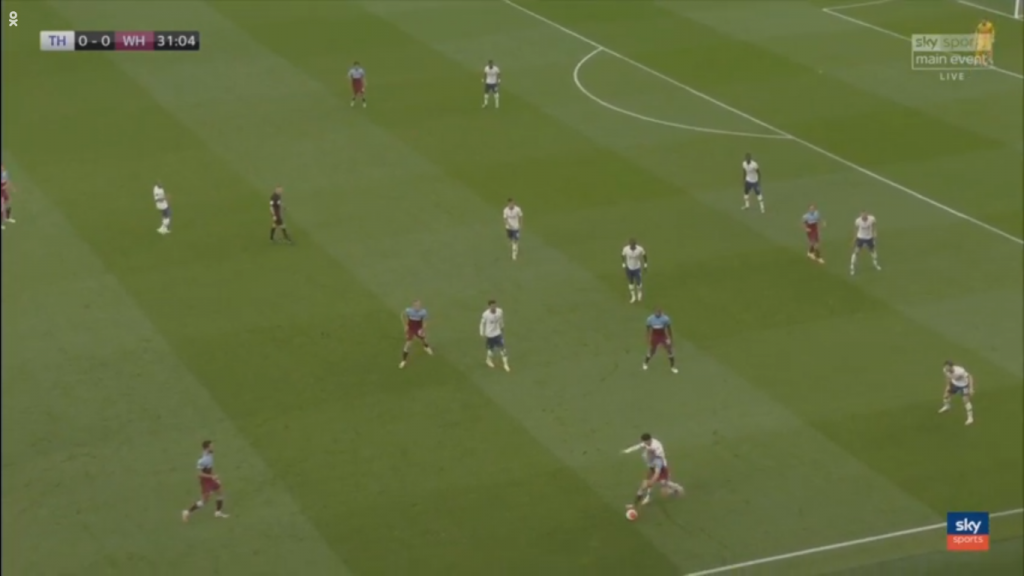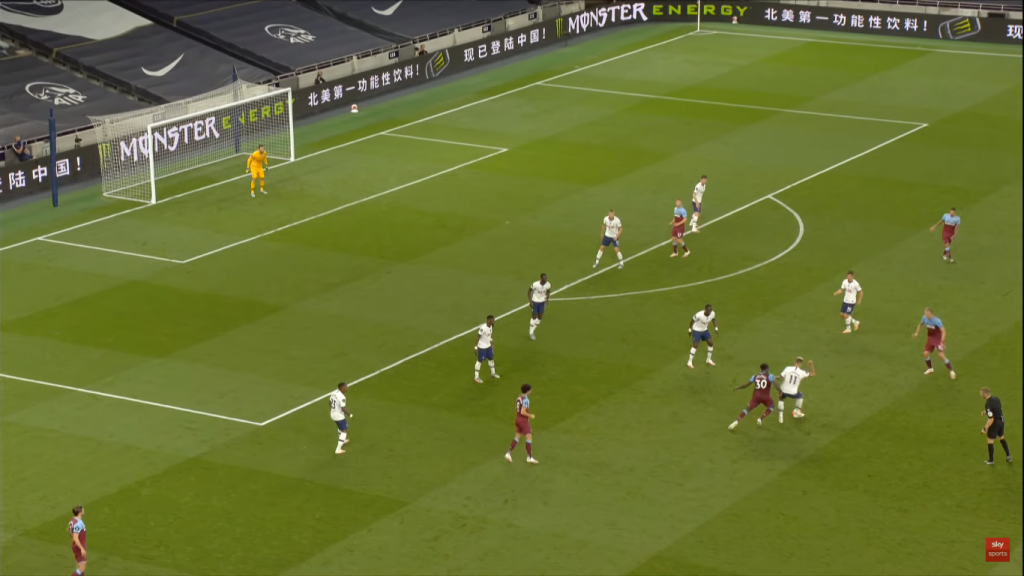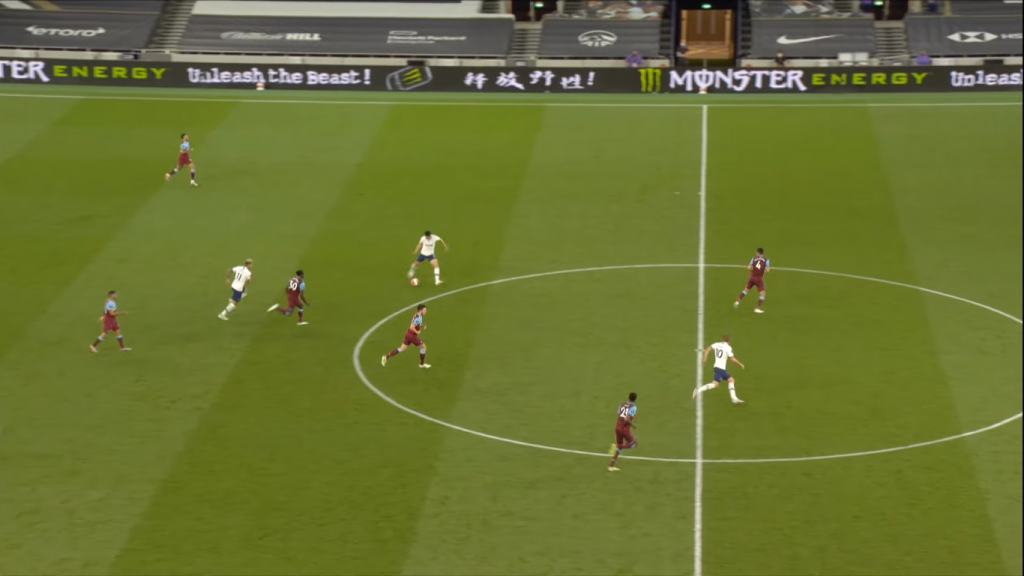As Spurs continue their quest for European football, they faced West Ham United. Who were in ‘relegation form’ going into the game. Since David Moyes’ appointment in Dec 2019. (Transfermarkt) West Ham have played 11 Premier League games winning just 2 (18%), keeping only 1 clean sheet and conceding 20 goals in these 11 games. (Premier League). This was the perfect opportunity for Spurs to get back to winning ways following 7 games with a victory in all competitions (Sky Sports)
Formations
Spurs lined-up in a system and formation we’ve seen often under Mourinho, in what is called the ‘pendulum 4-2-3-1’, with Alli and Lo Celso back into the side following the 1-1 draw against Manchester United. West Ham also opted for a 4-2-3-1, with Declan Rice back in Midfield alongside Noble and Soucek.
West Ham pattern
As discussed in the preview, West Ham have been heavily reliant on long balls for offensive progression, only 6 teams have completed more long ball this season (Premier League.com). This was often the release for West Ham United against Spurs. West Ham opted preliminary for a compact 4-5-1 block, with Mark Noble dropping in to complete the midfield screen:
West Ham’s ‘get out’ ball was long to Antonio, looking to link up with Josh Bowen. Per whoscored.com West Ham attempted 73 long balls in the game (Spurs 47), with this accounting for almost 20% of West Ham’s passes. Antonio won 11 duels with no player winning more with Josh Bowen often the beneficiary, West Ham’s direct approach is supported by the pass map below:
With the thick lines, departing from Fabianski indicating the long ball approach. The center-right orientation of Antonio indicating West Ham’s preferred side to attack, with 42% of attacks coming down the right for West Ham. (Whoscored.com)
Despite the direct approach appearing to target Spurs’ left-hand side, Dier impressed again, winning 2nd most aerial duels (9), having joint-most interceptions (2) for Spurs and most clearances for Spurs (3) (whoscored.com). Dier’s dominance in the air is the reason why he was suggested in my preview to start over Alderweireld.
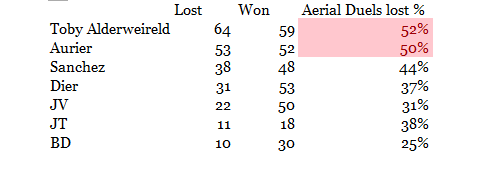 (Stats from Premierleague.com)
(Stats from Premierleague.com)
The Belgian is Spurs only Centre back to have lost more duels that he has won. Given the relative success of Sanchez and Dier recently, it is likely this partnership will continue with both complementing each other effectively.
MORE SPURS STORIES
Spurs Structure
This next section visits the Spurs offensive structure during the game, with Spurs holding 65% possession against West Ham (Whoscored.com). This represents the patterns that were portrayed most often.
As is trademark Spurs under Mourinho, they lined up in a 4-2-3-1 but during offense, this turned into a 3-4-2-1 with Spurs looking to build with 3 at the back.
Often the CBs look to feed either of the MF pivot (Lo Celso + Sissoko), with one of the 2 attackers (Alli + Lucas) providing an additional central passing option. But one passing option which is omnipresent and has proven to be an effective outlet is Serge Aurier holding a wide, high-right position, which resulted in the corner leading to the Spurs’ first goal.
(Image showing Spurs 3-4-2-1, with Aurier high and wide).
David Moyes identified the threat of Serge Aurier, which lead to an intriguing 1v1 duel against Fornals. Fornals at times was transformed into an auxiliary left-back, turning the defense into a back 5:
Inside the first 20 minutes, Spurs has no shots (whoscored.com), largely due to the compactness of West Ham while also restricting Spurs’ outlet in Aurier. A new feature under Mourinho debuted against West Ham which was Davies operating in a more progressive position rather than Aurier attacking while Davies sits. This allowed for Spurs to better stretch West Ham, while meaning more attackers in the box.
Davies during first ‘phase’ attacks progressed into an inside left position alongside the midfield:
During the second wave of attacks, Davies would then be operating a left exterior position.
Davies was encouraging from this position, putting in 2 accurate crosses only Creswell (3) completed more accurate crosses. (Whoscored.com)
On possession turnover, Spurs under Mourinho have a ‘passive press’: The closest to the ball press, while the other players in retreat, block the open passing lanes. This is where Spurs can be more aggressive, given the shape and number of offensive players in the opposition third, a more assertive collective press can be used ‘choking’ the opposition better-preventing counter attacks.
Following opposition entry into mid, final thirds. Spurs sit in a mid/low block:
As is trademark, Mourinho who likes to stifle opposition buildup, the Spurs midfield mark both the space and man of the opposition midfield. In the above examples, see Lucas and Alli marking the opposition pivot. In a compact block, the midfield screen provides effective cover, with very little space to play in between the lines.
Counter-attacks
A clear positive sign against West Ham was the speed at which Spurs countered. Spurs created 3 chances from counter-attacks (Whoscored.com) scoring from one of these.
Following the first goal, Jose Mourinho sat in a 4-2-3-1 low block. Lamela stole the ball from Antonio, with Kane scoring the second goal of the game from the 4-pass sequence. Spurs have now scored 6 goals from counter-attacks (Premier League) only Leicester and Liverpool have scored more. Counter attacking has often been how Jose Mourinho sides win games particularly the bigger occasions, this trait will be fundamental to any success Spurs have under Mourinho.
Keep up to date with all the latest Tottenham news and opinion by following SpursWeb’s Facebook, Twitter and Instagram accounts.
